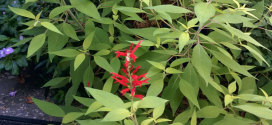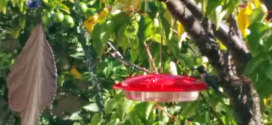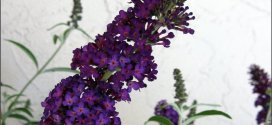Salvia elegans. This plant is attractive to bees, butterflies and/or birds. Tubular red flowers and lime-green leaves are fragrant with a scent similar to pineapple. Can be grown in a 1-foot deep, 1-foot wide pot. Salvia elegans, commonly called Pineapple sage or Tangerine Sage, is a perennial shrub native to Mexico and Guatemala. It inhabits Madrean and Mesoamerican pine-oak forests …
Read More »Tag Archives: Hummingbirds
Henbit
Henbit is a small but pretty winter wildflower. Hummingbirds enjoy this wild edible for the nectar. Henbit is also an important early season source of nectar and pollen for honeybees. Unlike many of its relatives in the mint family, henbit does not have a strong or distinctive mint scent. The common name, Henbit, comes from the observation that chickens like …
Read More »Hummingbird Feeders
I have tried several types of hummingbird feeders. The key issues are ease of cleaning and preventing other critters from interfering. Avoid feeders that have to be cleaned with special bottle-brushes. The disadvantages of the feeder below are: The small opening to the bottle requires bottle-brushes Larger birds like orioles pry off the yellow screens or just knock the whole …
Read More »Bower Vine
Bower Vine, Jasmine, Pandorea jasminoides. Pink bower vine is a fast-growing vine that reaches heights of 20 to 30 feet at maturity. The vine adds color to the landscape all summer, displaying soft pink, bell-shaped blooms with dark pink throats. Thanks to the lush, evergreen foliage, the vine is attractive even when it isn’t blooming. Bower vine is suitable for planting …
Read More »Liatris
Liatris is easy to grow and versatile. These 1–5 feet tall plants emerge from mounds of narrow, grass-like leaves. Liatris flowers form along the tall spikes, and these fuzzy, thistle-like blossoms, which are usually purple, flower from the top to the bottom rather than in the traditional bottom to top blooming of most plants. There are also rose colored and …
Read More »Buddleja
Butterfly Bush, Summer Lilac, Orange-eye Butterfly Bush, Buddleja fallowiana ‘Lochinch’ Family: Buddlejaceae Genus: Buddleja (BUD-lee-uh) (Info) Species: fallowiana (fal-low-ee-AH-nuh) (Info) Cultivar: Lochinch Synonym:Buddleia fallowiana Category: Shrubs Height: 4-6 ft. (1.2-1.8 m) 6-8 ft. (1.8-2.4 m) Spacing: 4-6 ft. (1.2-1.8 m) Hardiness: USDA Zone 5b: to -26.1 °C (-15 °F) USDA Zone 6a: to -23.3 …
Read More »Foxglove – Dark Rose Angel Mist
Foxglove, Digitalis purpurea. This plant is attractive to bees, butterflies and/or birds. Average Water Needs; Water regularly; do not overwater. Self-sows freely; deadhead if you do not want volunteer seedlings next season. Other details: May be a noxious weed or invasive. The bad news is that foxglove (Digitalis purpurea) does not occur as a perennial. It is a biennial, meaning that …
Read More »Cuphea – Flamenco Red
Many gardeners have learned the value of Cuphea for summer long flowers. We value them not only for the small, attractive flowers, but also for the hummingbirds, butterflies, and nectar-feeding insects that swarm around them. Aka Bat-Face Cuphea, St. Peter’s Plant, Tiny Mice, Bunny Ears, Cuphea llavea. Cuphea is a family of plants containing about 115 species according to the …
Read More »Linaria purpurea
You can’t get any easier to grow than Linaria purpurea. Slender spikes of tiny violet-blue snapdragon-like flowers over narrow, whorled, blue-grey leaves light up many an old garden. Blooms all Summer in full sun or part shade. Fairly drought tolerant once established & it reseeds! To 3’ high & 1’ wide, it looks good in groupings. Native to southeastern Europe.
Read More »Angelonia
Native to Mexico and the West Indies, angelonia (sometimes also called summer snapdragon) is an upright, glabrous, somewhat bushy, tropical perennial that is noted for its long summer bloom of small snapdragon-like flowers. Plants typically grow 12-18” tall. Stems are clad with narrow, oblong to lanceolate, green leaves (to 3” long) with toothed margins. Foliage is slightly aromatic. Bluish-purple flowers …
Read More »








